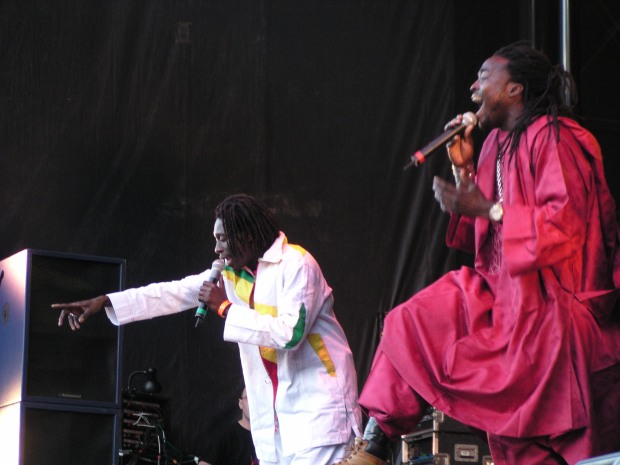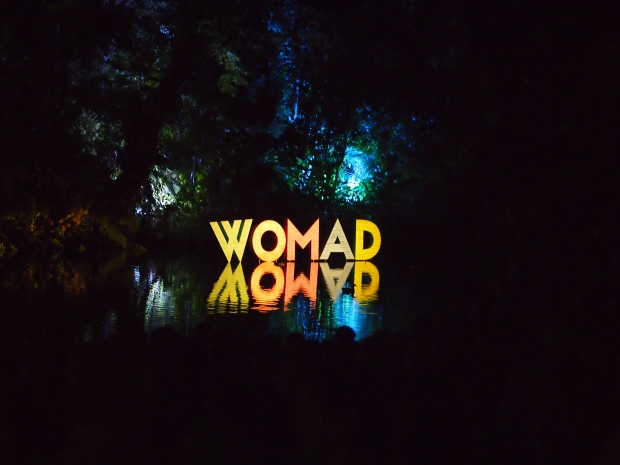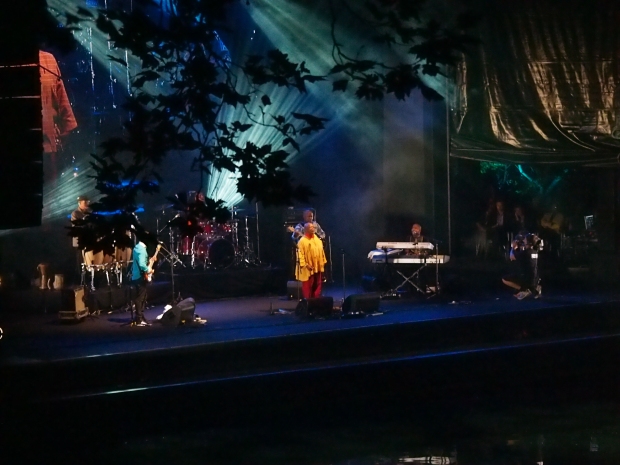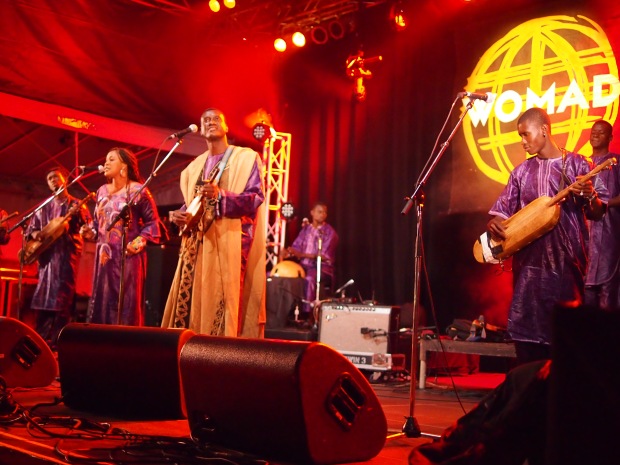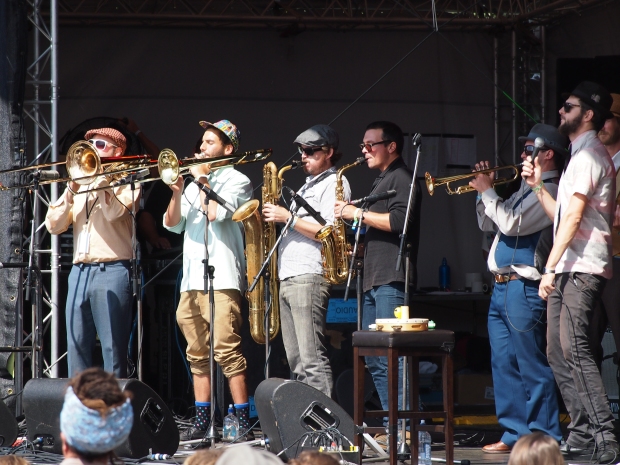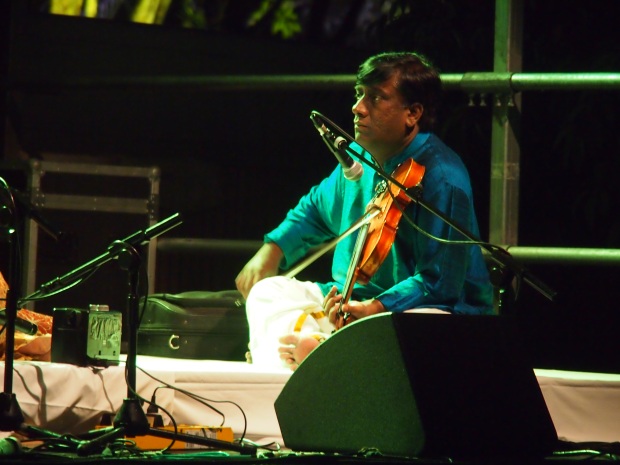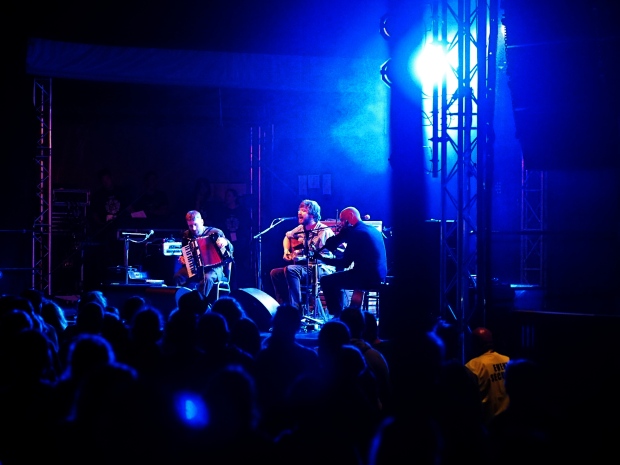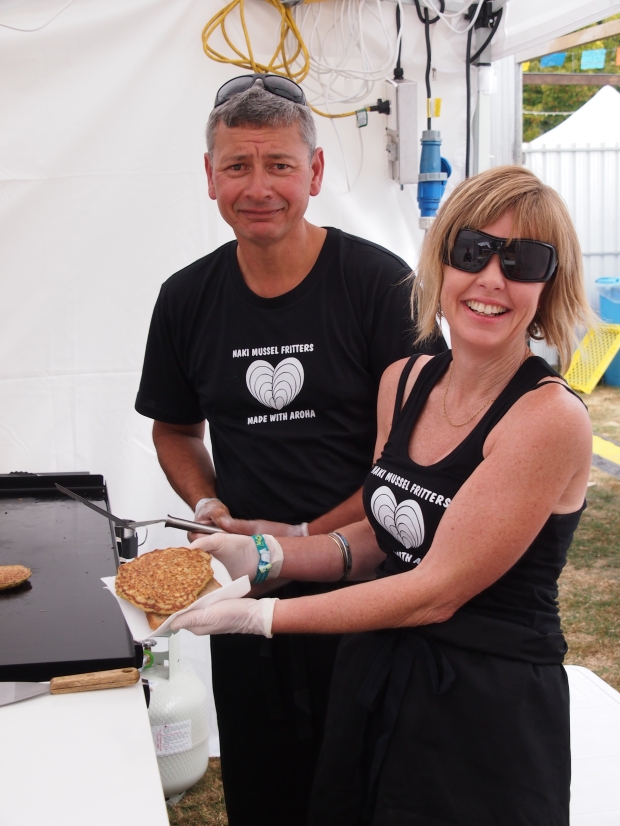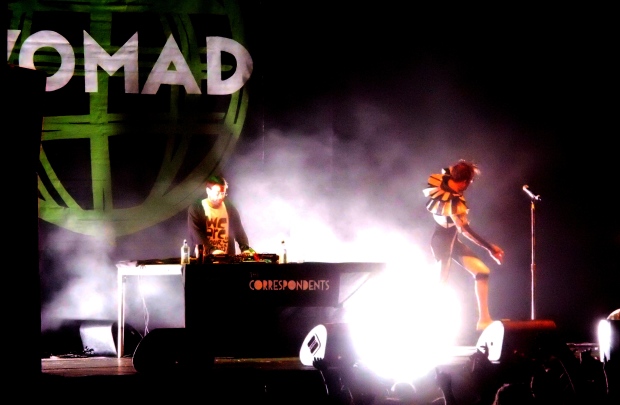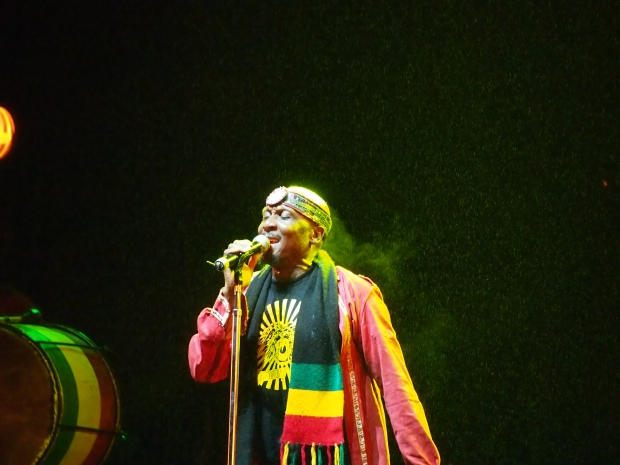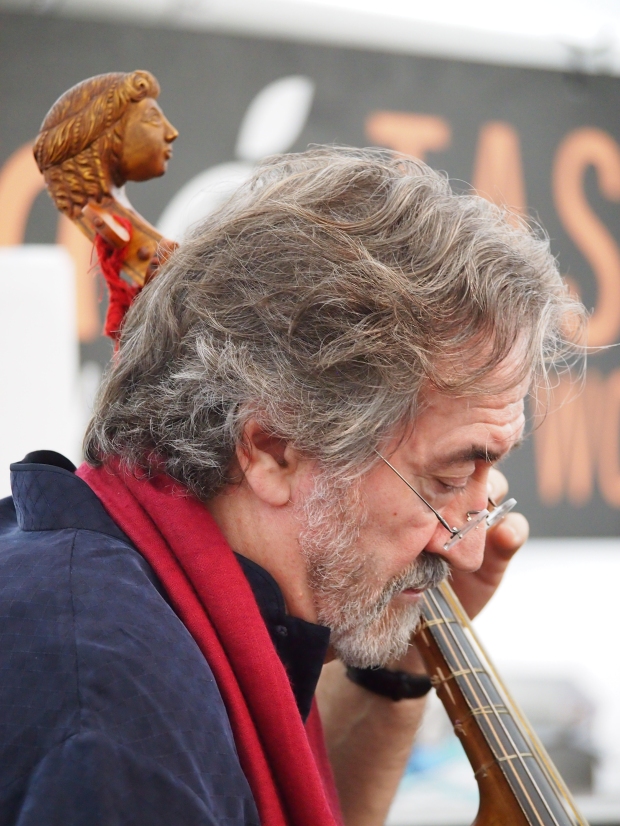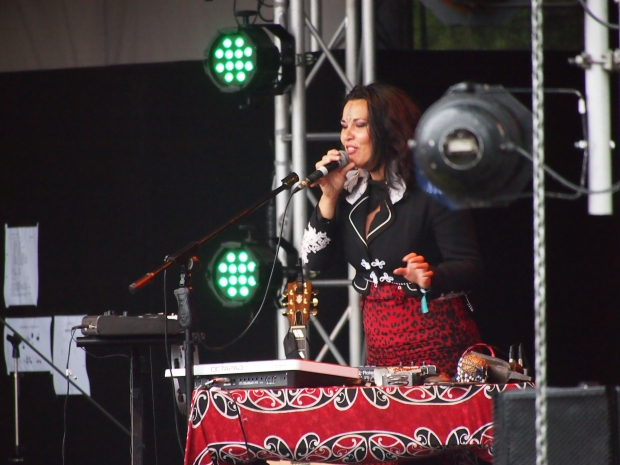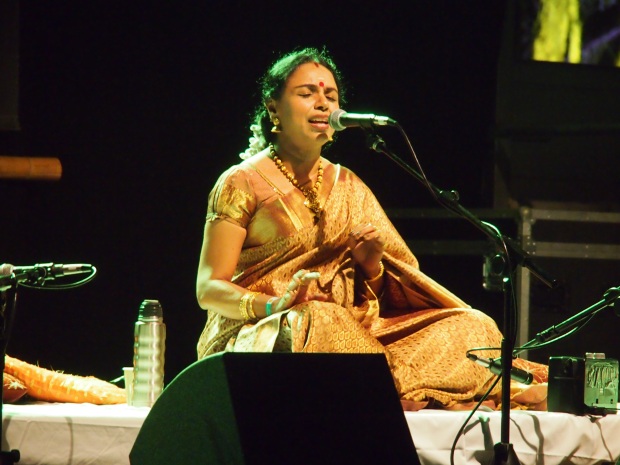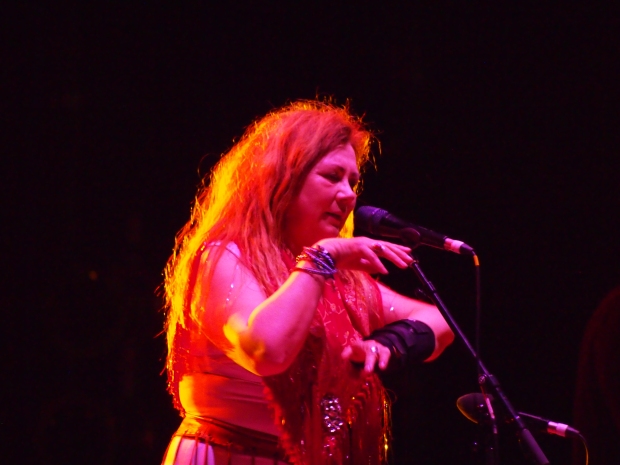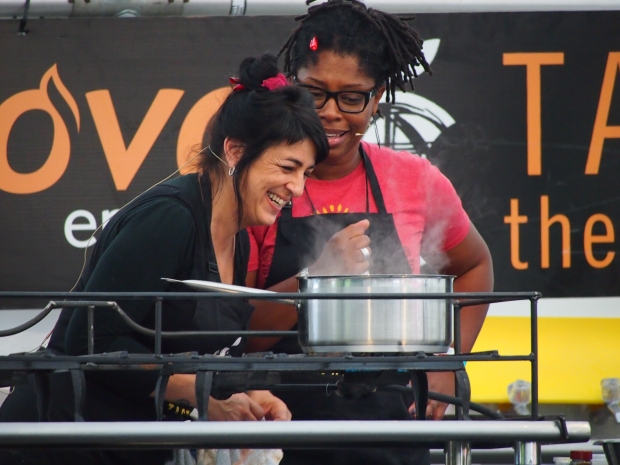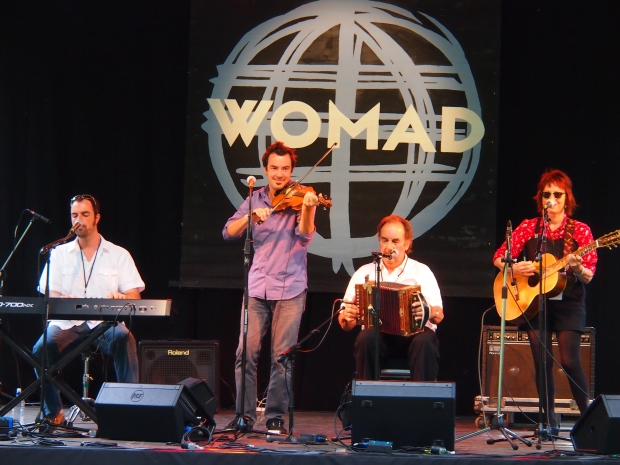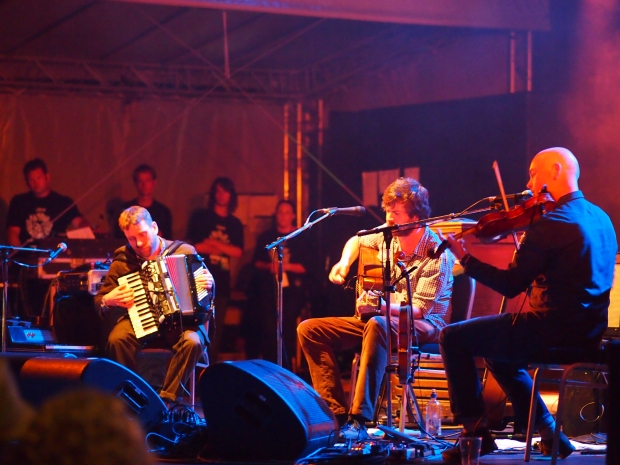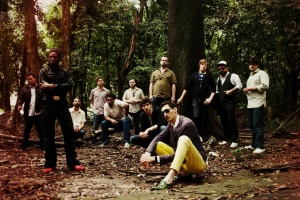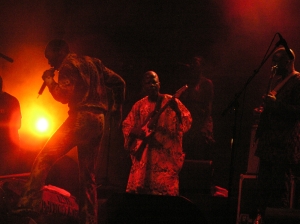It’s been a while since I came across Senegalian band Daara J at WOMAD Taranaki. A trio of very likeable intelligent young men sang with energy in styles that some would say had their origin in the hard battles of Detroit but which they would say owed its origin to West African music, the minstrelsy, griot traditions that have been developed by artists such as Baaba Maal and Youssou N’Dour, conveying positive messages about love, health and community.
Daara J’s original founders, Fadda Freddy and N’Dongo D, together with Aladji Man became world famous with their third album “Boomerang”, playing at venues in the UK, USA and around the world via the WOMAD music festivals. The title of the album reflects their belief that Hip Hop has its origins (like much American music) in the West African kingdoms from which people were taken as slaves. Recently they have reverted to the founding duo and are known as Daara J Family, with their most recent album “School of Life” reflecting the range of musical styles with which they grew up. Check out their latest video in which they “celebrate” in a mixed groove which includes ska, rocksteady and twist influences.
This was the same WOMAD in which I met the late Richie Havens, a survivor from Greenwich Village in the 60s, and famously from his appearance as opening act at Woodstock. I asked him about Hip Hop and the negative imagery it communicated; violence and misogyny. He told me not to believe everything I heard, that the public face of Hip Hop was a distortion created by the record companies that did not reflect the truth on the streets, where rappers and singers would write and sing much more positive sets of lyrics. Yes there was a culture of drugs and the crime that surrounds it, but that was never the whole story. Hip Hop may come from hardship but it doesn’t have to be hateful, mean and abusive towards women.
Listen to Richie Havens Here:
Hip Hop has always been political; a blend of dominant rhythm and poetic exclamation which at times doubles the rhythm section in a band, weaving around and across a singer’s melody; and at other times stands like a raw edge to sequences of pre-recorded, mixed or scratched sounds. It’s often edgy and tough, yet draws its themes from everyday experiences of love, hardship, anger and celebration. It is often associated with communities that are disadvantaged, marginalized and poor and is an ideal vehicle to transmit messages of hope.
occasionally musicians appear on my personal musical radar, they make contact, I might meet them or just talk online and we form a connection. One of these is a young Sengalian Rapper, Matar M’baye who goes by the name of Cool Art MC.
Cool Art MC was born in Dakar and is at the forefront of a new group of Senegalese rappers, having fallen in love with Hip Hop in the early 1990s and deciding to take up a solo career in 1998. His lyrics are a mix of Wolof and French, speaking to the people of Senegal and to a wider francophone world. However, Hip Hop is language and rhythm based, so when the words are not understood the power of the emotion is transmitted by the voice and the rhythm.
“From my earliest childhood my only love was to make rap music. My brothers were rappers and in 1996, through their faith in my talent I began to take my work seriously. As I grew up I became more aware of the hardships faced by those around me in the poor suburbs of Dakar: floods, poverty, violence, injustice and corruption. My community could see how I was passing this message through my music, even though I did not have any albums.”
Boubacar Djiba, Owner of Vazy Music an artist management company, described to me what the music scene is like in Dakar.
“In Senegal the music is developing, with the traditional styles of Mbalax from artists like Youssuo N’Dour, Baaba Maal and Ismaël Lô, and newer styles like Rap and Hip Hop, led by Daara J and Positive Black Soul (PBS). People listen to music in different places in the cities. Radio stations are very important for musicians exposure, also there are big festivals with lots of artists. Locally, there are no big halls or arenas so the artists play in clubs or go to a public place, set up their materials and then put on a show, but they won’t collect much money, because the audiences are poor. To play in the clubs the musicians must already have an album, and a band.
“It is hard to fund music here in Senegal. Music piracy is sucking money out of the industry, making it very difficult to find backing for recording projects. I have a business plan for an album, with all the recording and production costs, as well as the background activities like publicity and video, yet it is still hard to get finance. Senegal is not a rich country, we have great musical ambassadors like Youssou N’dour and Daara J who are now mentoring younger artists like CoolArt. We have international ambitions and need to create more recordings to reach a wider public. In Senegal people come to performances when they have your records. It’s the CDs and the videos that make you famous, then the shows. Here you get respect from what you have to show for your success: posters, CDs, videos etc; that attracts the audience.
“When you are producing music that has a fan base of young people who have no money themselves it is hard to get funds to create albums. We use our own funds to make recordings, mainly using the little equipment we have. We are lucky to have a new computer now so we can make a little, slow progress. Here though, it is often a question of who you know that can get you a chance to earn money from your music.
You have to LOOK GOOD and show success before you can get a chance to have success
CoolArt MC has performed at venues in Senegal and has yet to travel beyond the borders of his country. His concerts have included other rap artists, as guests – such as this one in his home Dakar suburb of Thiaroy where he performed with 9 others in a show where he was the headline artist.
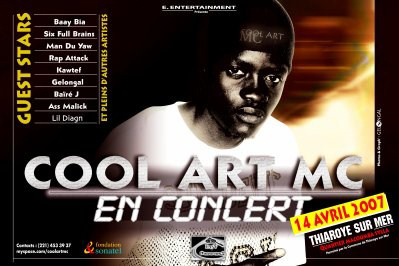
Thiaroy has a history of hardship and revolt. It was the scene for an infamous massacre of Senegalese “tirailleurs “, or conscripts, in 1944. These West African conscripts of the Senegalese units of the French army mutinied against poor conditions and revocation of pay at the Thiaroye camp. The mutiny was seen as an indictment of the French colonial system and became a watershed for the nationalist movement. The tirailleurs involved were former prisoners of war who had been repatriated to West Africa and placed in a holding camp awaiting discharge. They demonstrated in protest against the failure of the French authorities to pay salary arrears and discharge allowances. The following day French soldiers guarding the camp opened fire killing thirty-five African soldiers. The provisional government of Charles de Gaulle, concerned at the impact of the Thiaroye incident on serving tirailleurs acted quickly to ensure that claims for back pay and other monies owing were settled.

CoolArt MC is becoming a voice for the disenchanted youth of Senegal: “Enough is Enough” they are saying. His song “JUSTICE BOU KOUMBA AME NDAYE” is a rap song with fiery words on the determination of Senegalese youth to take their destiny in hand for a better future. (Check out http://www.npr.org/2012/02/19/147113419/enough-is-enough-say-sengalese-rappers )
“……this song was made to sensitize the population but mainly the youth on the importance of voting and fighting for democracy in Senegal. At (the time of recording) we were preparing the presidential election and it was very intense because people wanted to see changes according to the day-to-day hardship they were living so we decided to join the fight and voice the injustice in the country and it works because people made a great step in the democracy by electing a new President.
We are involved in the different issues of our country but also of the world we want to make positive changes with our music and inspire others to do the same “
As part of his commitment to social issues CoolArt has also recorded music in support of the worldwide campaign against Malaria ,, performing at a “Roll Back Malaria” awareness concert in Senegal in 2010.
In the song he urges the people of his country to become more active in Malaria prevention: (In Translation)
Prevention is better than waiting untill the disease affect you
Let’s join our hands and fight against Malaria before it bring us down
Take tablet as soon as your body shiver and hurts
If you feel that it’s better to go at the hospital
Malaria is not good for children and pregnant women
Parents must take care of their children and themselves
The Poor people are mainly affected by Malaria during the rainy season
Beware of stagnant waters and the exposition of flowers because it’s the hidden place of mosquitoes
Let’s fight against by taking fast act tablets, chase the mosquitoes before sleeping and sleep under impregnated mosquito
Hey Mosquitoes beware and know that we fight against you.
currently Cool Art MC spends time touring in schools to both educate and entertain young people about social issues, he is also working on an album of songs he has written and arranged, looking for resources to convert his music into CDs and videos that will publicize his talent.
I can see that, compared with the US, life for musicians in Senegal has similarities and differences. Musicians with talent have to work hard to get their music heard in both countries, yet the Senegal scene has built-in barriers of poverty, pride and nepotism that interfere with what could be a natural progression for talented youth like Cool Art MC.
Cool Art will be organizing a fund-raising campaign for his new album…. so watch this space!!!
